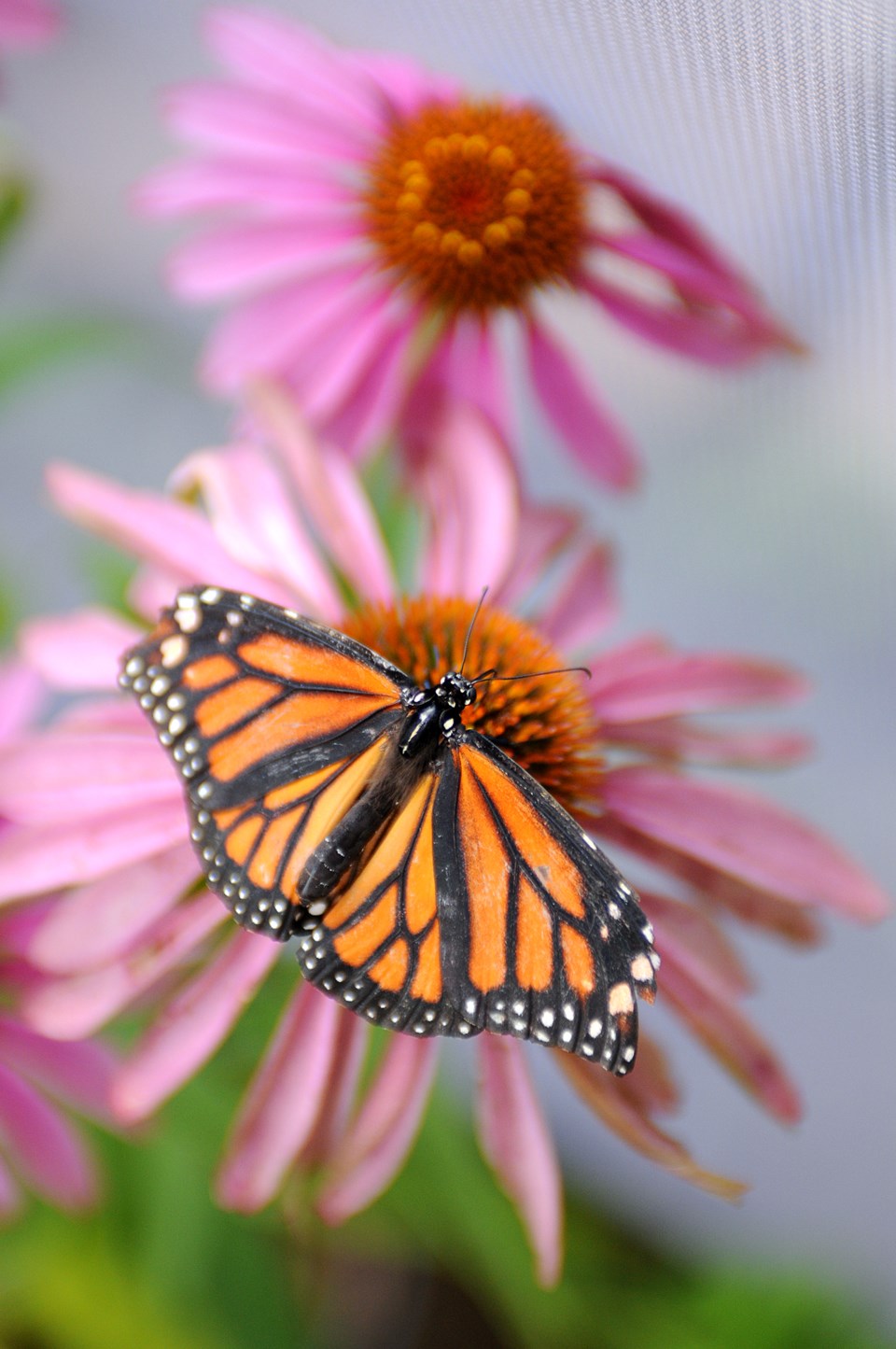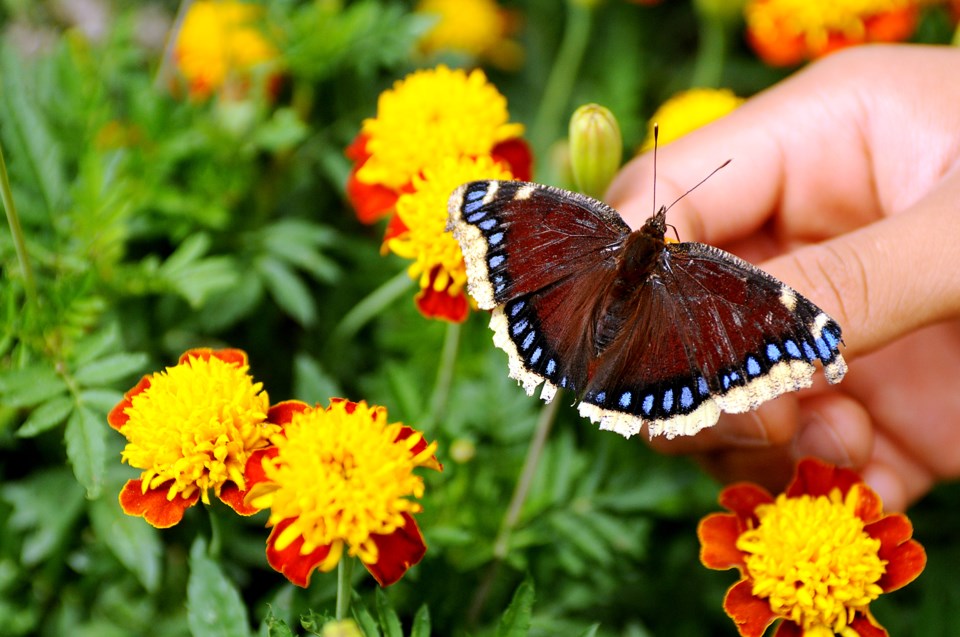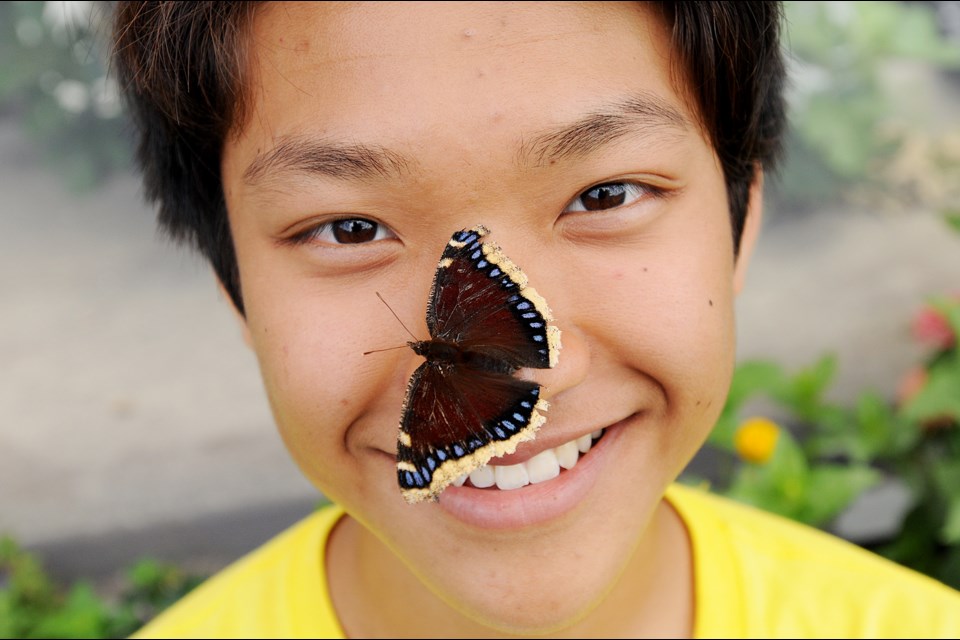Fifteen-year-old Joshua Yu’s backyard is anything but ordinary. In any given moment, there are about a hundred butterflies nursing in Metamorphic Farms.
Yu’s online business launched in June as word spread about his breeding business in his average-sized backyard in East Vancouver.
The farm sells these creatures in every stage of their growth (except for the egg). Sales include larvae kits, butterfly raising supplies, and butterflies for release. The store’s products and butterflies are popular among teachers, non-profits, and for weddings.
With a passion for animals that started at three years old, Yu’s interest in butterflies skyrocketed when he was six as a result of his mother’s nurturing during his childhood in Maple Ridge. While visiting an exhibit during a vacation in the Caribbean, she placed a large butterfly on his nose and it’s those kind of close encounters that fuelled Yu’s passion for butterflies.
Yu orders butterflies from a supply company or catches adult butterflies for breeding season in spring and stops selling and distributing them during hibernation season in winter. He has created a “flight house” or mini ecosystem populated with seven native species, including Cabbage White and Red Admiral, with nectar and host plants where the butterflies lay eggs and use for food. During the summer, his backyard nurses up to 5,000 butterflies.

To ensure he’s not diminishing the overall butterfly population, he releases twice as many butterflies as he catches. And if they’re not sold after two weeks in the flight house, he releases them all.
With the continued disappearing bee population, Yu says he’s noticed “a significant decrease” in butterfly populations but an increase in species not commonly found in Vancouver. He calls it a sign of global warming.
“When I first came to Canada [from New York], I actually saw a couple of monarch butterflies … we used to see them all the time, and over here I’ve only seen maybe two and that was back in 2007. And I’ve never seen one ever since.
“As a butterfly breeder, I’m always concerned when people are spraying pesticides, insecticides — I’m always wondering what is the impact on the wildlife that we have. Many insecticides, they are targeted not only for the particular pests but also affect the other animals in the area.”
Joshua’s father Andy Yu note that in addition to their backyard being colonized by butterflies, their dining room is taken over by wildlife with a fish tank and cages of Joshua’s geckos and chameleons. Although Joshua giggles as he recalls his dad initially being “squeamish” around the butterflies, the senior Yu has adopted to the learning curve.
“I grew up in the city, like New York City, and we don’t have this kind of environment,” he says.
While some teenagers would prefer to spend time playing computer games, the mini school student would rather use the Internet to learn how to raise butterflies. He once aspired to be an entomologist when he grows up but has since settled on a more “well-rounded” profession as a doctor.
Butterfly species explained
Here are some of the butterflies raised at Metamorphic Farms:
Painted Lady: This butterfly is commonly called the thistle butterfly because of its love for weeds around the garden. It will lay eggs on plantain, borage, hollyhocks, and other species in the malva family. We raise these butterflies for our larvae kits for schools to raise butterflies and witness metamorphosis. These are sought out for wedding releases and other events. A very friendly butterfly that is not afraid to interact with people after a release. These butterflies live for four to six weeks.
Mourning Cloak: Also called the Camberwell Beauty, they are the longest-lived butterfly in North America, capable of living up to 11 months as an adult butterfly. This is compared to the few weeks of lifespan for most butterflies. With a cream coloured border, spotted with blue on a background of maroon, it is even seen when snow is on the ground. It prefers tree sap to flowers but is a frequent visitor to gardens. The caterpillars feed on cottonwood trees, willows, and poplars.

Milbert’s Tortoiseshell: One of the smallest butterflies that we have available most of the year. However, even with their small size, they are one of the most colourful. These butterflies hibernate locally and love to visit gardens. Their caterpillars eat stinging nettle, which is a common weed that people try to avoid, thus getting rid of their share of butterflies.
Red Admiral: Closely related to the Painted Lady, its caterpillars dine on stinging nettle just like the Milbert’s. A very powerful butterfly, capable of migrating to other areas where their food plants are available. In some years they are more common. We raise Red Admirals only in the late summer and fall.
Tiger Swallowtail: One of our largest butterflies but hardest to breed. We have no swallowtails breeding at the moment but hopefully will start in a couple of weeks. This butterfly hibernates over winters as a chrysalis and if conditions aren’t right, will wait for up to two years to emerge. Its caterpillars eat the leaves of cottonwood trees, poplars, and willows much like the Mourning Cloak. A very stunning butterfly that we raise only for increasing the population as they do not do well at releases.



